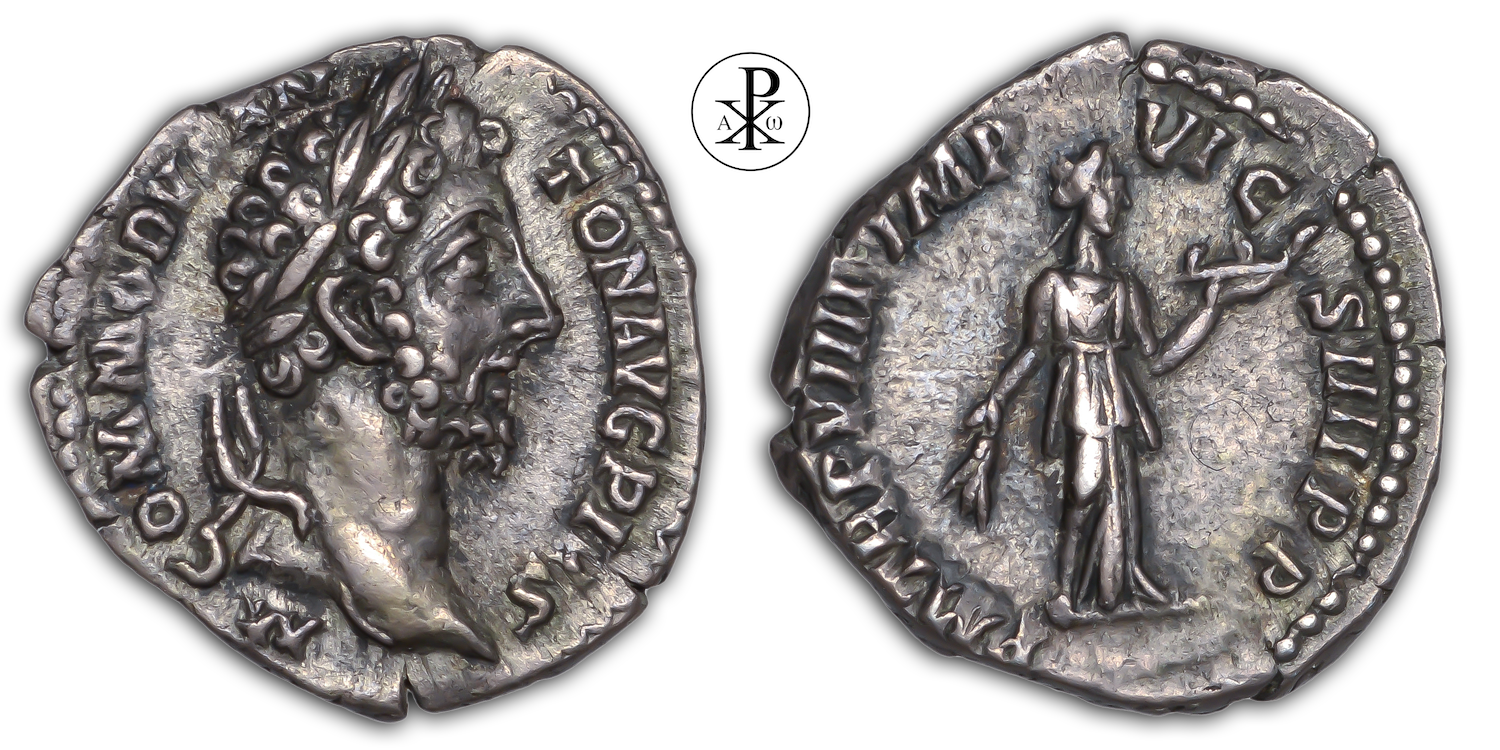Imperator Caesar Marcus Aurelius Commodus Antoninus Augustus
Reign: Commodus
Mint: Rome
Date: 183/184 AD
Nominal: Denarius
Material: Silver
Diameter: 18mm
Weight: 3.01g
Reference: RIC III Commodus 75
OCRE Online: http://numismatics.org/ocre/id/ric.3.com.75
Rare: R1
Provenance: Noonans Numismatics London, Great Britain (Auction 21, Lot 503)
Pedigree: From the Graham Collection of Roman Imperial Coins (Bt Seaby 1966)
Obverse: Head of Commodus, laureate, right
Inscription: M COMMODVS ANTON AVG PIVS
Translation: Marcus Commodus Antoninus Augustus Pius
Reverse: Fides, standing right, holding corn-ears in right hand and basket of fruit in left hand
Inscription: P M TR P VIIII IMP VI COS IIII P P
Translation: Pontifex Maximus, Tribunicia Potestate Nona, Imperator Sextum, Consul Quartum, Pater Patriae
Translation: High priest, holder of tribunician power for the ninth time, Imperator for the sixth time, consul for the fourth time, father of the nation
Comment: Fides was the Roman personification of trust, loyalty and oath. She was also venerated under the name Fides Publica Populi Romani (roughly “general trustworthiness of the Roman people”). According to tradition, Rome’s second king Numa Pompilius established annual festivals in honour of Fides, and instituted that the higher priests (the three flamines maiores) were brought to the temple in a covered vaulted chariot drawn by two horses. There they were to conduct Fides’ services with their heads covered and their right hands wrapped up to their fingers, thus showing absolute devotion to Fides and symbolising trust. There is historical evidence of the erection of a temple on the Capitol during the 1st Punic War. Its temple in Rome, consecrated in 254 BC by the consul Aulus Atilius Caiatinus, was located on the Capitol near the temple of Jupiter. Here the Roman Senate signed and kept treaties with other states, entrusting them to Fides’ protection. As a rule, a standing woman is depicted, usually with ears of corn and a basket of fruit or a cornucopia and bowl. She thus embodies the “Fides publica” – the promise of trust and loyalty between the emperor and the Roman people. In the later – and increasingly uncertain – imperial period, more and more issues of the “Fides militum” and the “Fides exercitus” were added, mostly with military attributes such as spear, sceptre, standard or aquila. These coins fervently invoke the loyalty of the legions and soldiers to their emperor.
Probably towards the end of 182 AD Commodus was able to thwart the conspiracy of Quadratus and Lucilla. This period also saw the fall of the former favourite and guard prefect Paternus. The aftermath of these events was felt until AD 183. The overthrown Paternus was succeeded by Sextus Tigidius Perennis – who seized all governmental power and, according to some ancient sources, administered the empire disinterestedly with skill and prudence. He was also concerned with a peaceful balance between the ruler Commodus and the Roman people – and after the turbulent times, a better time (of trust and mutual obligation) was now to dawn. The type of denarius presented here from the year 183/184 AD corresponds to the “Fides publica” – i.e. the newly proclaimed and renewed trust and loyalty between the ruler Commodus and the Roman people.
The coin was a part of the famous Graham Collection of Roman Imperial Coins (Tinchant, Paul [a.k.a. “Graham, Richard J.”]; Jacques Schulman N.V. The Richard J. Graham Collection of Ancient Greek, Roman and Byzantine Coins including a splendid series of Roman Bronze Medallions. Catalog of public auction [243], 8 June 1966. Amsterdam. 1966. [Clain-Stefanelli 3668 & 4978]).
